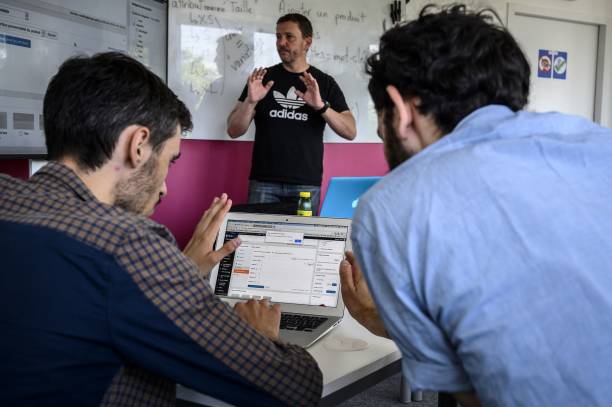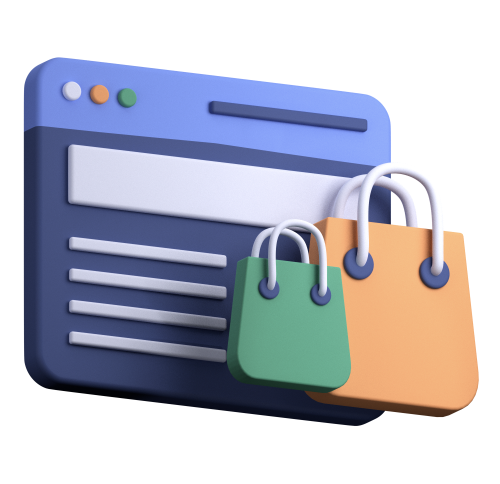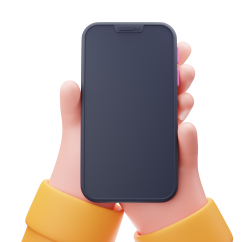
Got a Project? Tell us about it!
We are a leading custom software development agency focused on web, mobile app development & SaaS application development & MVP Development.
How to Calculate the ROI of Your UI/UX Design Investments
- Development
- Technology
- Web Design & Development
Our experienced team of UX/UI designers and developers will help you stand out with a beautifully designed UX/UI.
What Is the Return on Investment (ROI) of UX Design?
 According to the Interaction Design Foundation, the special problem with assessing the ROI of UX is that the investment is frequently not evaluated in the same unit as the benefit, and the benefit is not necessarily immediate or quantitative. It's clearly proven that every dollar spent on UX generates a $100 profit for the company. Furthermore, software development experts believe that every dollar spent on the design stage of software development saves $100 in the long run. Design advancements are not limited to a single sector or brand. Consider:
According to the Interaction Design Foundation, the special problem with assessing the ROI of UX is that the investment is frequently not evaluated in the same unit as the benefit, and the benefit is not necessarily immediate or quantitative. It's clearly proven that every dollar spent on UX generates a $100 profit for the company. Furthermore, software development experts believe that every dollar spent on the design stage of software development saves $100 in the long run. Design advancements are not limited to a single sector or brand. Consider:
- After a UX makeover, Bank of America witnessed a 45 percent increase in online banking registrations.
- After a UX makeover, Wal-website Mart's traffic grew by more than 200 percent.
- Joe Gebbia, the founder of Airbnb, credits the company's $30 billion growth to its investment in user experience.
- After a UX overhaul, Hubspot observed a 300 percent increase in conversion rate.
The Benefits of Calculating UX ROI
1. Long-Term Cost Savings
How much will you spend handling clients' problems after the product launch? This is one of the most undervalued ROI elements. Users will encounter difficulties less frequently if you've extensively researched your industry and built reliable, data-driven customer path maps. This means you'll have to spend less time on phone calls, emails, and support requests to resolve user difficulties. When the number of users is minimal, it may not appear to be a big problem. It would be too late and far more expensive to re-design and re-develop your product as it expands.2. Increase Sales and Conversions
It's not creative if it doesn't sell. This is a critical thesis, particularly in the context of the marketplace and e-commerce design. UX and marketing have a lot more in common than they appear to have at first glance. Both are based on human behavior concepts that help people make decisions and do the activities they want. You don't want to spend money on marketing efforts just to have your ideal customers quit because they were confused during one of the purchasing phases. Sales blocks and ambiguity on the purchase path may be avoided by implementing industry design best practices throughout the research phase. Using a skilled UX/UI design agency will help you obtain better outcomes. These are also kept an eye on throughout the usability testing process. If you observe that the amount of shopping carts containing products but no transactions, or uncompleted sign-ups is a significant business loss at this point, it's time to evaluate your UX.Our experienced team of web designers and developers will help you stand out with a beautifully designed and functional website and web application
3. Productivity Increases
Your target audience is always your employees. Period. And it's the audience that gets the short end of the stick the most. By investing in user experience for your staff, you will reap the benefits of reduced working hours, increased employee retention, and increased efficacy (no one wants to do a monkey job, right?). This implies you may either use the time you've saved or waste it. Half of software developers' time is wasted on work that may be avoided, according to Susan Weinschenk, Chief of UX Strategy at Americas Human Factors International. As a business owner, your objective is to make every minute your employees spend count and provide value to your company.4. Cut Down on The Time You Spend on Development
Fixing a UX problem after the work is completed will be substantially more expensive. According to studies, their staff spend 40 to 50 percent of their time on needless rework rather than completing value-added work. The 1 – 10 – 100 Rule may be applied to the function of UX design in the development of digital products. In a nutshell, this means that an issue that might be fixed for $1 at the design stage will cost $10 throughout development and $100 when the product is delivered and fails. Despite the fact that this is a well-known norm in product management, these numbers appear to have symbolic meaning in UX. Let's instead create an actual formula that you can use to estimate and calculate the ROI design offers by reducing risks: (№ of UX issues) * (Average fix time in development) * (Developer's average hourly rate) * (№ of Developers) = Price of UX issues An example of successful use of the principle by American Airlines. They addressed usability concerns during the design phase of their website, lowering the cost of such modifications by up to 90%.Our experienced team of will help you stand out with a bespoke, flexible and scalable software application for your business.
5. Long-Term Customer Retention and Sales
With advertising platforms like Google and Facebook, bringing up new clients only through paid advertising is becoming increasingly expensive. This means that an existing client's worth is increasing faster than ever before. In this scenario, the first thing you'd want to do is boost an existing client's average lifetime value (LTV). It leads to two important sales metrics: improving average conversion value and boosting customer retention. Building a UX customer journey map will be a lot more productive with these metrics in mind, and the new UX design will score a greater ROI on your A/B testing stage.How to Calculate the ROI of Your UI/UX Design Investments
Our experienced team of web developers will help you stand out with a functional and well built eCommerce web platform.
1. Conversion Rate
The holy grail of all sales goals, is the proportion of people that performed your desired action, such as signing up for a newsletter, channel, or purchasing a product or service. There are optimization initiatives that are just focused on conversion rates. Conversion rates are calculated automatically by the majority of analytic and advertising solutions. In truth, it comes down to picking the best set of design and content aspects. You'll be shocked how even a tiny adjustment in the button's color, size, or position may affect click-throughs when optimizing your website or application for conversions. Now, what do you believe a reasonable price for resolving this UX issue would be?2. Drop Off Rate
The percentage of customers that left your funnel at a specific point before completing a conversion is known as the drop-off rate. The bounce rate indicated in the preceding example is sometimes mistaken with the drop-off rate. The main distinction between the drop-off rate and the bounce rate is that the bounce rate only counts people who leave after viewing the first screen.Our experienced team of android developers will help you stand out with a efficient and fast mobile app for your business.
3. Errors are recorded using a single usability metric (SUM).
Poor UX decisions can cause user interface design issues and impede your users' ability to go through the conversion funnel. While analytics can tell you where and how many consumers are going out of the funnel, they can't tell you what's wrong. Measuring faults in your UX process might help you learn more about the sorts of mistakes you're making and how to avoid them. The single usability measure is one of the most effective techniques of assessing faults (SUM). SUM is a single, standardized, and summarized usability statistic that tracks task completion rates, task time, satisfaction, and mistake counts. The SUM calculator translates raw usability measurements into a SUM score with confidence intervals on a task-by-task basis. The maximum allowable task time will be calculated automatically by SUM. Task completion time is only one measure that may help you analyze and avoid UX mistakes. There are plenty of additional methods to make your design process more usable and friction-free. To improve your conversion funnel, spend some time studying your UX mistakes. Conversion drop-offs are reduced when there are fewer UX problems.4. User Retention Rate/Lifetime Value
People are more likely to return if the user experience is good. This is due to the fact that individuals are more likely to pick what they are already familiar with. Increasing user retention not only improves conversion rates and average order value, but also saves money on customer acquisition costs. Because of these considerations, this statistic is one of the most profitable aspects of UX design. According to recent research by Bain & Company, a higher User Retention Rate can triple the entire business value. To calculate the retention rate, you must first determine how long you consider a return to be. Depending on your business's details, this will be influenced by a variety of external elements such as events, seasons of the year, geography, and more. It's time to compute the % once you've defined a monthly, quarterly, or annual retention duration. Divide the number of converted customers by the number of customers who returned at least once to arrive at this figure. Staples, for modernizing their eCommerce website and improving repeat purchases by 67%, is one of the excellent UX ROI examples. Isn't it impressive?The Most Important UI/UX KPIs
1. KPIs for Behavioral UX (what they do)
Behavioural KPIs are numerical representations of what a user is doing and how they engage with a product or website. Without the assistance of an interviewer or observer, this information may now generally be acquired completely automatically. As a result, this is a relatively straightforward and low-cost solution to begin gathering UX KPIs.- Task completion rate
- Time Spent on Task
- Navigation vs. search
- The rate of user mistake
2. UX KPIs for Attitudes (what they say)
This UX KPI assesses how customers feel or express themselves before, during, and after purchasing a product. I'll give three significant instances of this category in this section:- The Scale of System Usability (SUS)
- Net Promoter Score (NPS)
- Customer satisfaction is number seven (CSAT)
- I'm really dissatisfied.
- Dissatisfied
- Neutral
- Satisfied
- Very pleased
Tools to Measure UI/UX Efficiency
When you've determined which metrics to measure, the following step is to determine how you'll track them. You will be able to monitor all critical indications of your product's life with the use of specific instruments. Let's take a closer look at these tools.1. Google Analytics
Google Analytics is a Google service designed for webmasters and optimizers that allows them to evaluate user behavior on their website. The information gathered is saved on Google's distant servers. To link the system, professionals must put a short block of JavaScript code on the pages of the website. Google Analytics assists in the monitoring of critical metrics such as the following:- The pace of bouncing: This is the proportion of website/mobile app users that arrived at the landing page and then exited the software after 5-15 seconds. Any program owner's primary objective is to lower the bounce rate as much as feasible.
- The pace of exit: It differs from the bounce rate in that it reveals the page where most users left a website/mobile app. As an example, consider the Contact Us page. It is not negative if people leave this page after completing the contact form. They convert, and you receive leads as a result. However, if they often abandon a product page, this is an issue to be aware of.
- Average time spent on the page: It is, after all, a straightforward metric. You track which pages people spend the most time on and draw applicable conclusions.
- Page count per session on average: You can check how many pages people see every session.
- The use of a device is appropriate for software owners who wish to know which devices are being used to enter their product. Of course, if it's a mobile app, it'll be utilized on tablets or mobile devices. However, a website may be accessed via any of these devices, and analytics can assist you to determine how people like to navigate your website.
2. Google Optimize
Google Optimize is a website interface testing service. Owners may use Google Optimize to do A/B and multichannel testing and gather and analyze information about user activity on websites. A/B testing allows you to learn about changes in user reactions when one or more components of your website are altered. A/B testing aid in determining whether a version of the site is superior – the prior or current one. As a result, user behavior demonstrates how the perfect website should seem.3. Hotjar
Hotjar is a useful tool that assists website owners in optimizing conversions and improving website usability. Hotjar's most popular features are conversion funnels, heatmaps, and user records. It also integrates customer feedback tools and statistics to assist customers in determining where visitors click the most, how long they stay on each page, and their scroll map. Hotjar also adds to surveys, and the tool may be used to compute customer satisfaction rates. Using this data, you will be able to identify all of your website's flaws and work to remedy them.4. Crazy Egg
Crazy Egg is a web-based analytics tool that allows you to track the number of views. It creates heatmaps based on where users clicked. So you know which portions of the website to concentrate on. Heatmaps show you where people converted, and you can optimize these sites to maximize conversions. Scroll maps illustrate how long people scroll down the page and where they pause most of the time. Crazy Egg is used to get an overall picture of activity on your program.5. Heap
This application is used for both mobile and online analytics. It is a formidable rival to Google Analytics, which offers some comparable capabilities. Heap allows you to track and record all of a user's actions on a website or mobile app. Heap enables for the automated tracking of user events, as well as the definition of active users and user segments. It also identifies webpages and mobile applications without requiring any coding.6. Clicky
The web tool that permits traffic control, does extensive traffic analysis, responds to traffic changes, and gives complete data. As a result, this tool is an excellent choice for monitoring your traffic and other connected activities.7. Localytics
A huge multi-platform mobile and online solution that helps you to better understand your consumers, track critical events and user interactions, increase ROI, and design a top-notch marketing plan. This tool has a lot of capabilities, and you can use it to assess UX efficiency easily. Finally, you must collect client feedback and analyze their suggestions in order to enhance your product. Since happy customers indicate a successful firm, don't dismiss their recommendations and concerns.How Can We Help you Design Business-friendly?
Conclusion
Increasing UX ROI requires a thorough understanding of and anticipation of your consumers' demands. Even the biggest companies get fresh insights into their operations throughout the UX design process, which they use to differentiate themselves from the competition and create outstanding customer experiences. Always seek for chances to increase earnings while lowering expenses while developing the UX design for ROI. Make certain that your marketing and UX strategies are in sync, and that every member of your UX design team is aware of both. This will save you time and money by avoiding unnecessary rework. And perhaps the most important piece of advice here: choose your design teams carefully. Our dedicated development team has extensive experience. You can contact us today to get a free quote. Our team at Mobirevo strives to provide unrivaled services to all of our valued clients. You can also check out our case study page to see our client’s portfolio and get a better understanding of the quality of products we deliver. Also, contact us if you have any questions about our services, and we will get back to you as soon as possible. Want to receive more content like this? You can signup for our newsletter, which features curated opinions, and product discovery tools for building remarkable digital assets. If you sign up for our weekly newsletter, you will be the first to know when we publish awesome content like this. You can also visit our blog to see other content created with love by our amazing team.Got a Project? Tell us about it!
We are a leading custom software development agency focused on web, mobile app development & SaaS application development & MVP Development.
Subscribe to Our Newsletter
Join over 5,000 enterpreneurs and businesses who already have a head start.
Got a Project? Tell us about it!
Our Engagement Models
OUR PRESENCE
BLOCKCHAIN
OTHER SERVICES WE OFFER
CONTACT
Copyright © 2022 Mobirevo Software & Technologies LTD a company duly registered with CAC with RC Number: 1756190. All rights reserved.

Got a Project? Tell us about it!
We are a leading custom software development agency focused on web, mobile app development & SaaS application development & MVP Development.









